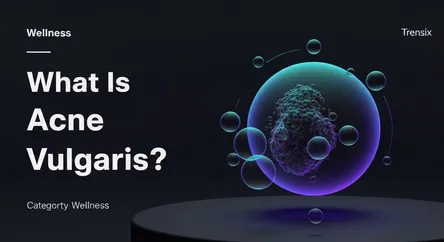Wellness
What Is Acne Vulgaris?

An explanation of acne vulgaris, the common skin condition causing pimples and blemishes when hair follicles get clogged with oil and dead skin cells.
What is it?
Acne vulgaris is the medical term for common acne, a long-term inflammatory skin condition. It occurs when hair follicles become clogged with excess sebum (oil) and dead skin cells. This blockage creates various non-inflammatory lesions like blackheads and whiteheads, and inflammatory lesions like papules (small red bumps), pustules (pimples), nodules, and cysts. It most commonly appears on the face, back, chest, and shoulders—areas with a high concentration of oil glands. The primary causes involve an interplay of factors including hormonal changes, excess oil production, bacteria (Cutibacterium acnes), and inflammation.
Why is it trending?
Acne vulgaris is a persistent topic in wellness because it's one of the most common skin disorders, affecting a majority of adolescents and increasingly, adults. Recent discussions are driven by a deeper understanding of its causes, recognizing that inflammation is a key factor from the earliest stages. This has led to advancements and new trends in management and treatment protocols. The ongoing conversation around skincare routines, ingredients, and mental health keeps acne vulgaris a highly relevant and searched-for topic online.
How does it affect people?
The condition's impact is both physical and psychological. Physically, it presents as various blemishes and can lead to permanent scarring and post-inflammatory hyperpigmentation (dark spots), which can be more common in darker skin tones. Emotionally, acne vulgaris can be distressing due to its visible nature. It often leads to significant psychological issues, including anxiety, depression, low self-esteem, poor body image, and social withdrawal. The earlier treatment is started, the lower the risk of such long-term physical and emotional complications.